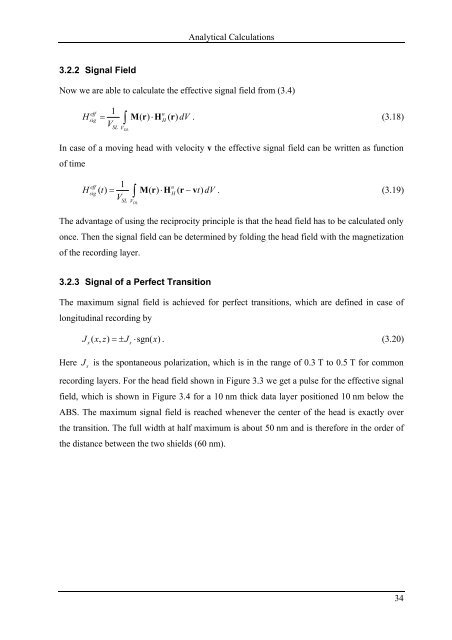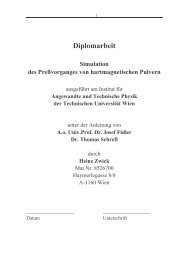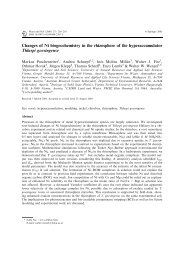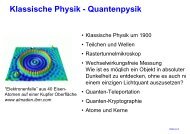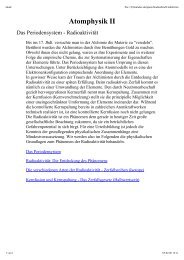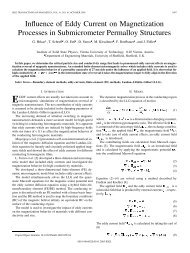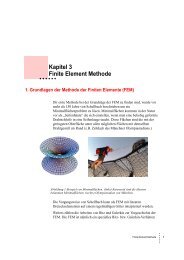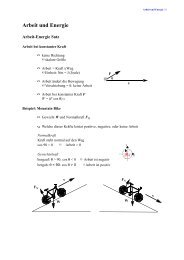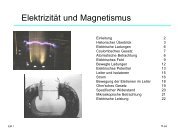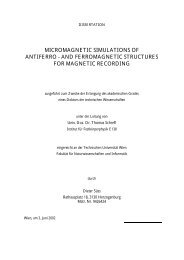Read Back Signals in Magnetic Recording - Research Group Fidler
Read Back Signals in Magnetic Recording - Research Group Fidler
Read Back Signals in Magnetic Recording - Research Group Fidler
Create successful ePaper yourself
Turn your PDF publications into a flip-book with our unique Google optimized e-Paper software.
3.2.2 Signal Field<br />
Analytical Calculations<br />
Now we are able to calculate the effective signal field from (3.4)<br />
eff 1<br />
n<br />
Hsig = () ⋅ H () dV<br />
V ∫ Mr H r . (3.18)<br />
SL V<br />
DL<br />
In case of a mov<strong>in</strong>g head with velocity v the effective signal field can be written as function<br />
of time<br />
eff 1<br />
n<br />
Hsig () t = ( ) ⋅ H ( − t) dV<br />
V ∫ Mr H r v . (3.19)<br />
SL V<br />
DL<br />
The advantage of us<strong>in</strong>g the reciprocity pr<strong>in</strong>ciple is that the head field has to be calculated only<br />
once. Then the signal field can be determ<strong>in</strong>ed by fold<strong>in</strong>g the head field with the magnetization<br />
of the record<strong>in</strong>g layer.<br />
3.2.3 Signal of a Perfect Transition<br />
The maximum signal field is achieved for perfect transitions, which are def<strong>in</strong>ed <strong>in</strong> case of<br />
longitud<strong>in</strong>al record<strong>in</strong>g by<br />
J ( x, z) =± J ⋅ sgn( x)<br />
. (3.20)<br />
x s<br />
Here J s is the spontaneous polarization, which is <strong>in</strong> the range of 0.3 T to 0.5 T for common<br />
record<strong>in</strong>g layers. For the head field shown <strong>in</strong> Figure 3.3 we get a pulse for the effective signal<br />
field, which is shown <strong>in</strong> Figure 3.4 for a 10 nm thick data layer positioned 10 nm below the<br />
ABS. The maximum signal field is reached whenever the center of the head is exactly over<br />
the transition. The full width at half maximum is about 50 nm and is therefore <strong>in</strong> the order of<br />
the distance between the two shields (60 nm).<br />
34


